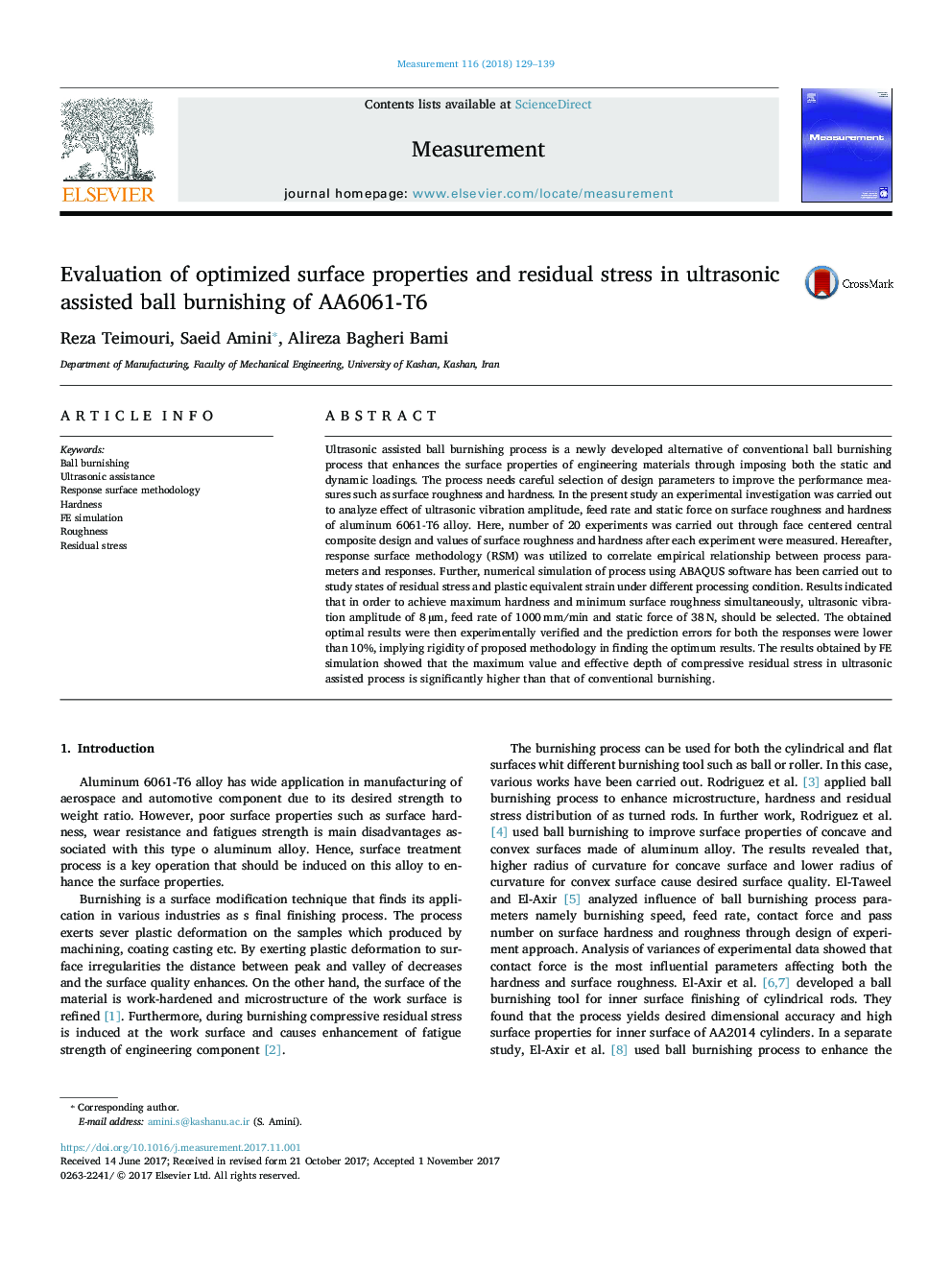| Article ID | Journal | Published Year | Pages | File Type |
|---|---|---|---|---|
| 7121965 | Measurement | 2018 | 11 Pages |
Abstract
Ultrasonic assisted ball burnishing process is a newly developed alternative of conventional ball burnishing process that enhances the surface properties of engineering materials through imposing both the static and dynamic loadings. The process needs careful selection of design parameters to improve the performance measures such as surface roughness and hardness. In the present study an experimental investigation was carried out to analyze effect of ultrasonic vibration amplitude, feed rate and static force on surface roughness and hardness of aluminum 6061-T6 alloy. Here, number of 20 experiments was carried out through face centered central composite design and values of surface roughness and hardness after each experiment were measured. Hereafter, response surface methodology (RSM) was utilized to correlate empirical relationship between process parameters and responses. Further, numerical simulation of process using ABAQUS software has been carried out to study states of residual stress and plastic equivalent strain under different processing condition. Results indicated that in order to achieve maximum hardness and minimum surface roughness simultaneously, ultrasonic vibration amplitude of 8â¯Âµm, feed rate of 1000â¯mm/min and static force of 38â¯N, should be selected. The obtained optimal results were then experimentally verified and the prediction errors for both the responses were lower than 10%, implying rigidity of proposed methodology in finding the optimum results. The results obtained by FE simulation showed that the maximum value and effective depth of compressive residual stress in ultrasonic assisted process is significantly higher than that of conventional burnishing.
Keywords
Related Topics
Physical Sciences and Engineering
Engineering
Control and Systems Engineering
Authors
Reza Teimouri, Saeid Amini, Alireza Bagheri Bami,
